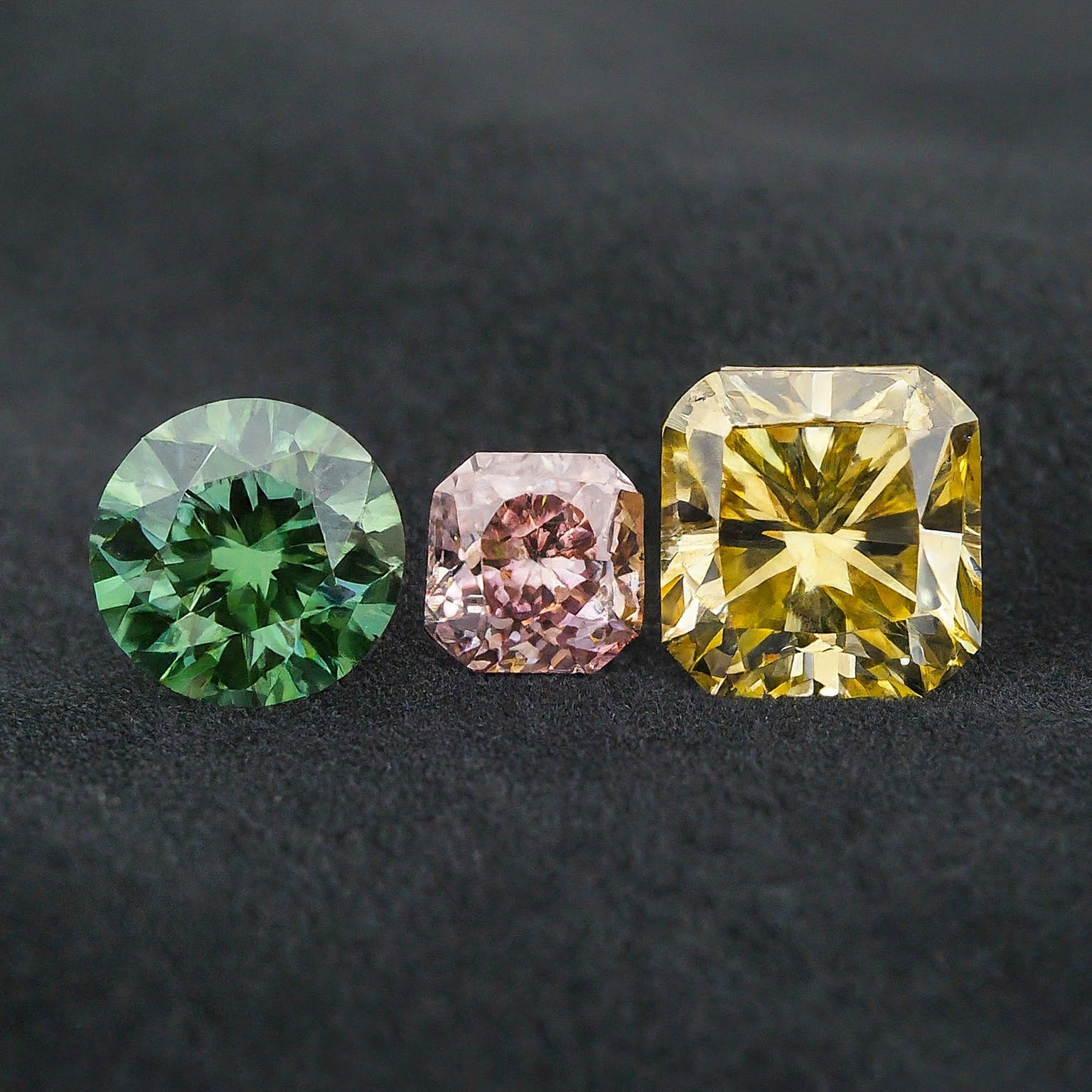Diamonds have captivated humanity for centuries with their mesmerizing beauty and unparalleled brilliance. Due to the artistry of mother nature, natural diamonds exist in a kaleidoscope of hues, each telling a unique geological tale of their formation. Such coloured gemstones are collectively known as “Fancy coloured diamonds.” Let us delve into the diverse colours of natural diamonds, examining their formation processes, crystalline structures, and the regions where they are unearthed.
Colours of Natural diamonds
Natural diamonds can occur in various colours, each of which is a result of specific geological conditions during their formation. The most common colours of natural diamonds include white, yellow, brown, and black. However, diamonds can also occur in rare colours like blue, green, pink, purple and red, which are highly valued for their rarity and beauty. Their scarcity makes them more valuable. The colour of natural diamonds is influenced by various factors including interstitial impurities, structural anomalies, and geological conditions during their formation. While buying colourless diamonds you look at the 4 Cs (Cut, Colour, Clarity and Carat). With black diamonds you focus more on the clarity and the overall gloss. However, coloured diamonds need to be approached differently. Here are some pointers about coloured diamonds that will be helpful to you while buying diamonds and diamond jewellery.
Brown diamonds
Brownish (discloured) diamonds are very common and lack sparkle. Therefore, they are used for industrial purposes. However, champagne and cognac diamonds, marketed as “chocolate diamonds” are rarer with a deep and rich colour. They are found in Australia, Africa, and Siberia. The brown colour is caused by nickel impurities and lattice defects.

Orange diamonds
Almost all natural diamonds contain certain amounts of nitrogen. However, the nitrogen atoms in an orange diamond group themselves in a unique manner that allow the absorption of light in between the blue and yellow region of the spectrum.
Most orange diamonds hail from Africa and this diamond colour became quite popular in 1997 after the Pumpkin Diamond was auctioned. Weighing at 5.54 carat, it was the largest vivid orange diamond that was ever discovered.
Yellow Diamonds
The specific arrangement of nitrogen atoms is also the reason behind the cause of the yellow colours in diamonds. Allnatt, the 101.29 carat fancy vivid diamond from South Africa, is the largest ever polished yellow diamond in the world. Most yellow diamonds have hues of orange, green or brown which at times add to their value significantly.

Green diamonds
Green diamonds owe their color to natural irradiation that occurs during their formation. When the diamonds reach the Earth’s surface from the depth at which they are formed, the naturally occurring radiation penetrates through the gem. This radiation exposure alters the diamond’s crystal lattice. It causes absorption of the red and yellow of the colour spectrum which results in the green being reflected. Green diamonds can be found in South America and Africa. The Dresden Greenand at 41 carats is among the most famous green diamonds.

Blue Diamonds
Blue diamonds derive their colour from the presence of boron impurities during crystallisation. The colouring ranges from blue-green to blue-gray. The famous Hope diamond (a supposed cut of the French diamond) is a notable example of a true dark blue diamond. While India was historically the first source of blue diamonds (the infamous Idol’s eye), it is now fow in Brazil, South Africa and Indonesia.
Red diamonds
Red diamonds are an extremely rare variation of pink diamonds. The largest red is the Moussaieff Red which is only 5.11 carats.
In the colourful world of natural diamonds, rarity and beauty converge to create gems of unparalleled allure. Each diamond hue holds a story of geological marvels and natural wonders. Therefore, the next time that you think about diamonds, think colours.
I hope you find it interesting
Cheers



What do you think?